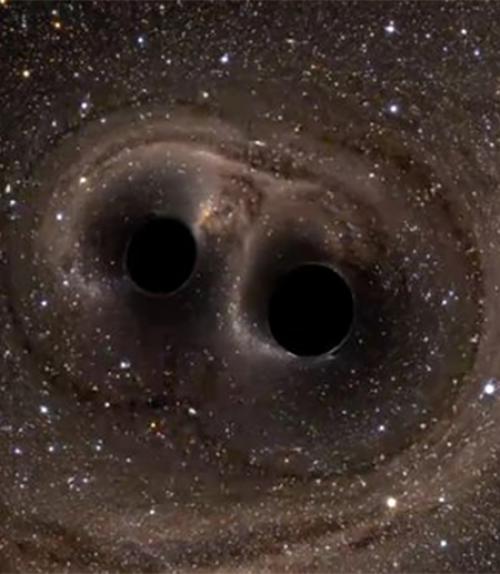The 2017 Nobel Prize in Physics has been awarded to three physicists for the momentous first observation of the gravity waves predicted by Albert Einstein. Rainer Weiss, Kip S. Thorne, and Barry C. Barish led the research done by LIGO, the Laser Interferometer Gravitational-Wave Observatory. The experiment confirmed that the gravity waves came from a black hole merger by comparing the data with a theoretical model developed at Cornell.
“The award celebrates a remarkable experiment. At Cornell, we feel honored to have played a role in the theoretical work that backed up this great discovery,” said Saul Teukolsky, the Hans A. Bethe Professor of Physics and Astrophysics.
Teukolsky and the Cornell-founded Simulation of eXtreme Spacetimes (SXS) collaboration group have been calculating and completing a full catalog of theoretical solutions since 2000, when supercomputers first became capable of the task.
Last year Teukolsky and senior research associate Larry Kidder, co-leader of the SXS collaboration, earned a share in the $3 million Special Breakthrough Prize in Fundamental Physics for their role in helping LIGO find gravitational waves.
“It is exciting, and a richly deserved honor for the recipients and over 1,000 other researchers who participated in the experiment. It is very satisfying that our group at Cornell contributed to the theoretical work used to interpret the discovery,” Kidder said.
Gravitational waves spread at the speed of light, filling the universe, as Albert Einstein described in his general theory of relativity. They are always created when a mass accelerates, like when an ice-skater pirouettes or a pair of black holes rotate around each other. Einstein was convinced it would never be possible to measure them. The LIGO project’s achievement used a pair of gigantic laser interferometers to measure a change thousands of times smaller than an atomic nucleus, as the gravitational wave passed the Earth.
“The ability to directly observe gravitational waves has opened up a new window in astronomy that will allow new observations of the most compact objects in the universe, such as black holes and neutron stars, which are complementary to electromagnetic observations in visible light, x-rays, gamma-rays, radio, etc.,” said Kidder. “By combining gravitational wave and electromagnetic observations, astrophysicists will gain new insights into black holes and neutron stars.”
Also contributing to the Cornell work were research associates Michael Boyle and Scott Field, and graduate students Andrew Bohn, Francois Hebert and William Throwe.





